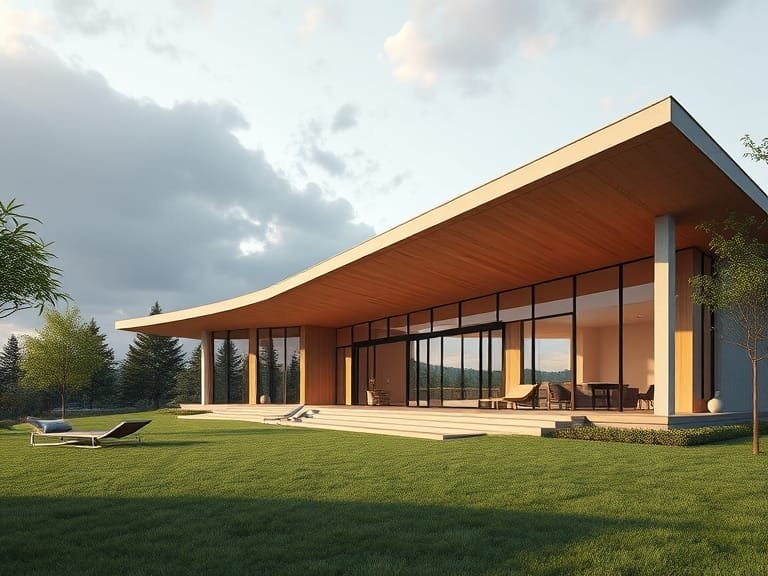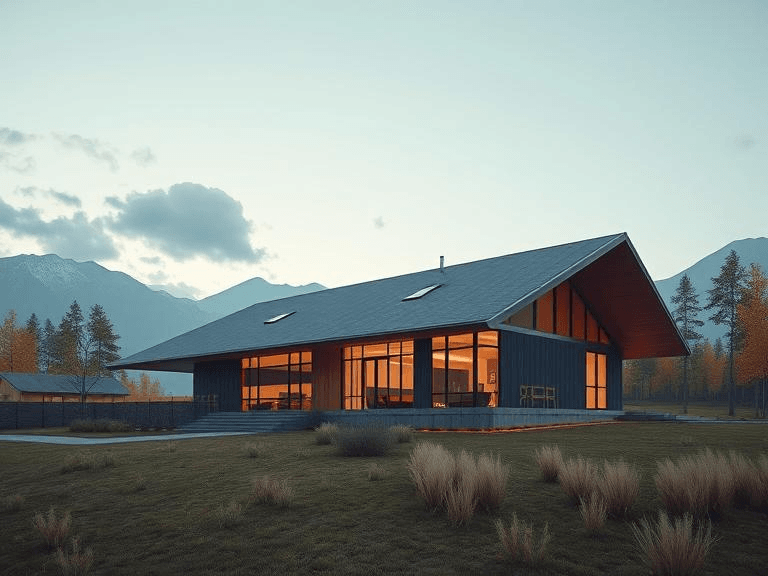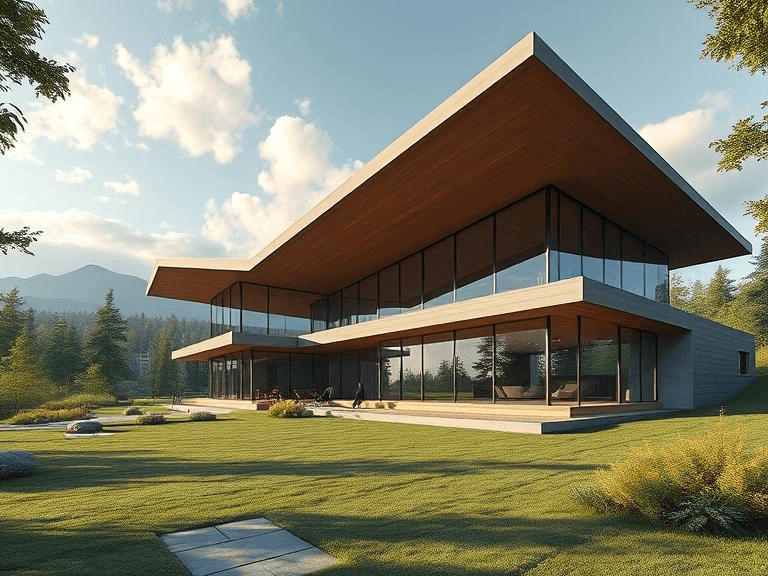
The roof serves as a crucial element in the architectural framework of any building. Fundamentally, it is designed to provide protection against various environmental elements, including rain, wind, snow, and extreme temperatures. However, the importance of a roof extends beyond mere shelter. It plays a pivotal role in determining the overall aesthetics and character of a structure. The choice of roofing materials, design, and color can significantly impact the visual appeal of a property, making it an essential consideration for both architects and homeowners alike.
Understanding the essential parts of a roof is vital for making informed decisions regarding maintenance, construction, and renovations. A roof encompasses numerous components, including the framework, underlayment, shingles, and ventilation systems, each serving a specific function that contributes to the roof’s overall effectiveness and durability. By grasping the intricacies of these elements, individuals can better appreciate how they work in unison to safeguard a home while also enhancing its appearance.
Moreover, a well-constructed roof not only shields a building from external hazards but also aids in energy efficiency. Components such as insulation and ventilation play a significant role in temperature regulation, thereby reducing heating and cooling costs. Regular maintenance of these parts is essential to uphold the functional and aesthetic qualities of the roof, thereby prolonging its lifespan and preventing costly repairs. A deprived roof can lead to structural damage and diminished property value, underscoring the importance of understanding roof anatomy.
In essence, the roof should be viewed as a fundamental component of a building’s design and functionality. The significance of its parts cannot be overstated, and recognizing their individual and collective roles is crucial for maintaining the integrity and appeal of any structure.
Key Components of a Roof
A roof serves as the first line of defense against environmental elements, and understanding the essential parts of a roof is crucial for assessing its condition and functionality. The main components include rafters, decking, underlayment, shingles, flashing, and gutters. Each part plays a vital role in ensuring the effectiveness of the roofing system, contributing to water management, insulation, and the overall structural integrity.
Rafters are the sloped beams that form the framework of a roof. They provide support for the roof structure and help to manage the weight of heavy snow or rainfall. The proper installation and maintenance of rafters are essential, as they are integral to both the load-bearing capacity and aesthetic appearance of the roof.
Decking, often made of plywood or oriented strand board (OSB), serves as the base layer on which the roofing materials are applied. This component is crucial for providing structural stability and protecting the underlying structure from moisture. It acts as a barrier, ensuring that any water seeping through the roof can be effectively drained away.
Underlayment is a waterproof or water-resistant layer that is installed directly over the decking. This layer provides an additional measure of protection against leaks and is critical in preventing water damage, particularly during storms. Shingles, the most visible part of the roof, come in various materials such as asphalt, wood, or metal, and they work primarily to shed water while also enhancing the aesthetic appearance of the building.
Flashing is another key component, typically used around roof features like chimneys, vents, and valleys to prevent water infiltration. It directs water away from these vulnerable areas, ensuring that the integrity of the roof is maintained. Lastly, gutters collect and channel water away from the roof and the foundation, preventing erosion and structural damage. Overall, these components together form a cohesive system that safeguards homes from various weather conditions.
Roof Structure Types
The roof structure is a critical aspect of any building, serving as the primary defense against weather elements while also contributing to aesthetic and functional characteristics. Various roof designs can be categorized based on their shapes and the materials used. The most common roof structure types include gable, hip, flat, shed, and mansard roofs.
Gable roofs are among the most popular due to their simple design, characterized by two sloping sides that meet at a ridge. This design allows for effective water runoff and provides additional attic space. Gable roofs are particularly advantageous in regions with heavy rainfall or snowfall, as their steep angles reduce the risk of water pooling. However, they may not be suitable for areas prone to high winds, as strong gusts can lift or damage the roof.
The hip roof, with all sides sloping downwards to the walls, offers enhanced stability against strong winds, making it more appropriate for hurricane-prone areas. Its design provides additional space for ventilation and aesthetics, though it generally requires more materials and can be more expensive to construct than gable roofs.
Flat roofs are often chosen for their modern appearance and are commonly found in commercial buildings. While they provide the benefit of maximizing usable space, they can pose significant drainage challenges, necessitating regular maintenance to prevent leaks and water damage.
Shed roofs, characterized by a single sloped surface, are simple to construct and versatile in design. They are often used for modern homes and additions, particularly where a contemporary aesthetic is desired. However, they may not be ideal in areas with heavy snowfall, as the roof’s angle may not sufficiently prevent snow accumulation.
Lastly, mansard roofs, which feature slopes on all four sides, lend an elegant profile to buildings and allow for spacious attic space. These roofs are suitable for various climates but may require intensive maintenance and reinforcement against seasonal weather shifts.
Insulation and Ventilation
Insulation and roof ventilation are fundamental components of a roofing system, playing crucial roles in energy efficiency, comfort, and durability. Good insulation materials help in minimizing heat transfer between the interior and exterior of a building, significantly reducing the energy demands for heating and cooling. Quality insulation ensures that in winter, heat generated from heating systems remains indoors, while in summer, it prevents the excessive influx of heat from the outside environment. This not only enhances comfort but can also lead to considerable savings on energy bills.
Various types of insulation materials are used in roofing, including fiberglass, cellulose, and rigid foam. Each type has its distinct properties, R-values, and application methods. The choice of insulation should be aligned with the local climate and the specific energy efficiency goals of the homeowners. Properly installed insulation can ease the strain on HVAC systems, resulting in a longer lifespan for both the systems and the roof itself.
Equally important is the role of ventilation within the roofing system. Proper ventilation facilitates the flow of air within the roofing structure, helping to regulate temperature and moisture levels. Without adequate ventilation, heat and moisture can accumulate in the attic space, leading to numerous problems such as ice dam formation in colder climates and condensation-related issues in warmer environments. This buildup can ultimately lead to reduced roof lifespan, structural damage, and mold growth.
The integration of insulation and ventilation is essential for creating a balanced roofing system. Insulation reduces temperature fluctuations, while ventilation maintains air quality and moisture levels. Therefore, careful planning and execution of both components contribute significantly to the longevity and performance of a roof, emphasizing the importance of understanding the essential parts of a roof for any successful roofing project.

Roofing Materials Explained
When it comes to understanding the essential parts of a roof, one of the most critical factors to consider is the choice of materials. The type of roofing material selected can significantly impact the roof’s durability, aesthetic appeal, and overall performance. Among the most popular options are asphalt shingles, metal, tile, and slate, each offering distinct advantages and disadvantages.
Asphalt shingles are widely used due to their affordability and ease of installation. They come in a variety of colors and styles, making them suitable for a range of architectural designs. However, their lifespan typically averages around 20 to 30 years, and they may not perform well in extreme climates, particularly in areas prone to heavy snowfall or heat.
Metal roofing is another prevalent choice, renowned for its exceptional durability and resistance to harsh weather conditions. Available in various styles, including sheets and tiles, metal roofs can last 40 to 70 years, which makes them a long-term investment. Despite being more expensive initially compared to asphalt shingles, their low maintenance needs and energy efficiency often offset the initial costs over time.
Tile roofs, particularly made of clay or concrete, are often celebrated for their aesthetics and longevity. They can last over 50 years and are highly effective in areas with high heat, making them suitable for warmer climates. However, tile roofs are heavy and may require additional structural support, leading to higher installation costs.
Finally, slate roofing is considered the epitome of durability, frequently lasting over a century. It is resistant to fire and strong winds but can be prohibitively expensive, both in terms of material costs and the installation process. Furthermore, the weight of slate necessitates a robust structural foundation.
In conclusion, the choice of roofing materials plays a crucial role in the overall functioning of a roof. By evaluating the benefits and drawbacks of various materials, homeowners can make informed decisions that align with their budget, climate conditions, and aesthetic preferences.
Roof Maintenance Essentials
Maintaining the integrity of your roof is critical to ensuring a safe and comfortable environment in your home. Regular inspections play a vital role in identifying potential issues before they escalate into costly repairs. Homeowners should conduct semi-annual evaluations of their roofs, ideally in the spring and fall. During these inspections, it is essential to check for visible damage such as missing shingles, cracked tiles, or signs of wear caused by weather exposure.
Another crucial aspect of roof maintenance involves cleaning gutters and downspouts to prevent water damage. Clogged gutters can lead to standing water, which promotes leaks and rot within the roofing structure. Homeowners should ensure that gutters are clear of debris, including leaves, twigs, and dirt. This can help facilitate proper drainage and direct water away from the foundation of the home, ultimately preserving the roof’s structure.
Leak detection should be part of any comprehensive roof maintenance routine. Homeowners are advised to routinely check for water stains on ceilings and walls, both inside and outside the home. These stains might indicate hidden leaks that require immediate attention. Upon discovering such signs, it is wise to consult a roofing professional to assess and remedy the situation, minimizing the risk of further damage.
Finally, addressing minor repairs promptly cannot be overstated. Small issues, if unattended, can evolve into more significant problems that compromise the roof’s integrity. Whether it involves replacing missing shingles or sealing gaps around vents, timely intervention can save homeowners from more extensive and expensive repairs later. Taking these proactive steps in understanding the essential parts of a roof and maintaining its well-being can significantly enhance its longevity and functional performance.
Common Roof Problems and Solutions
Roofs are essential components of any building, providing protection against the elements. However, due to natural wear and tear or environmental factors, they can encounter several common problems. Understanding these issues is vital for homeowners to maintain their roofs effectively and ensure longevity. This section outlines frequent roofing issues, their causes, and practical solutions.
One of the most prevalent problems is leaks. These often occur due to damaged or missing shingles, degraded flashing, or improperly sealed roof penetrations. Homeowners can identify leaks by looking for water spots on ceilings, walls, or even pools of water in the attic. To address leaks, it is crucial to locate the source. Replace or repair any damaged shingles immediately, ensure flashing is intact, and apply suitable sealants where necessary. Regular inspections can help catch potential leak sources before they escalate into significant issues.
Another common concern is missing shingles. Shingles may become dislodged due to strong winds, hail, or poor installation. Missing shingles can compromise the roof’s integrity and lead to leaks if not addressed promptly. Homeowners should regularly inspect their roofs for any visible gaps and replace missing shingles promptly. It is worth noting that using the same type and color of shingles can help maintain aesthetic appeal while ensuring compatibility.
Ice dams are another significant problem, especially in colder climates. They form when melting snow refreezes at the edge of the roofline, creating icicles and trapping water, which can lead to leaks. To prevent ice dams, homeowners should ensure their roofs are well insulated and ventilated. Additionally, clearing snow from the roof can help minimize the buildup and reduce the risk of ice formation.
In conclusion, proactive maintenance and timely intervention can help homeowners manage common roof problems effectively. Being vigilant in recognizing issues such as leaks, missing shingles, and ice dams can prolong the life of a roof and provide necessary protection for the home.
The Role of Professional Roofers
When it comes to understanding the essential parts of a roof, hiring qualified roofing professionals is paramount. Proper installation, repairs, and inspections are critical to ensure the longevity and integrity of your roofing system. Professional roofers bring a wealth of knowledge and experience, which is instrumental in avoiding costly mistakes that can arise from improper work. Whether it is minor repairs or a complete roof installation, the expertise of qualified roofing contractors can significantly impact the outcome of the roofing project.
One of the key factors to consider when selecting a roofing contractor is their licensing. A reputable roofer should hold all the necessary licenses required by local regulations to operate legally in your area. This not only demonstrates a commitment to professional standards but also indicates that the contractor adheres to the latest building codes and safety regulations. Additionally, insurance is another critical component to verify. A reliable roofing professional should possess both liability and workers’ compensation insurance. This protects you as the homeowner from potential liabilities that may arise in case of accidents or damage during the roofing project.
Moreover, customer reviews and testimonials serve as valuable resources when assessing potential roofing contractors. Examining past client feedback can provide insight into the quality of work, professionalism, and reliability of a roofing contractor. Positive experiences from previous customers often indicate that the roofer has a solid reputation in the community. By conducting thorough research and considering these factors, you can make an informed decision when choosing professionals capable of addressing the essential parts of a roof. Investing in professional roofing services ultimately leads to more durable and effective roofing solutions, safeguarding your home for years to come.
Conclusion: Importance of Understanding Roof Components
Understanding the essential parts of a roof is critical for any homeowner. A roof is not merely a protective covering; it plays a vital role in the overall structural integrity of a house. Knowledge of roofing components allows homeowners to identify potential issues early, which can lead to significant cost savings in maintenance and repairs. Recognizing elements such as the shingles, underlayment, flashing, and vents enables homeowners to assess their roof’s condition and longevity accurately.
Moreover, an informed approach to roofing can enhance the energy efficiency of a home. Different materials and designs affect how well a roof insulates and manages heat. For instance, understanding how ventilation works within various roofing systems can help homeowners choose the right upgrades to minimize heating and cooling costs. This knowledge is not only beneficial for immediate financial savings but is also a sound investment in the overall value of the property.
Additionally, maintaining a high level of awareness about roof components encourages proactive measures. This encompasses regular inspections, timely repairs, and understanding when a complete replacement may be necessary. Homeowners who stay informed can also make better decisions regarding renovations or improvements to their roofing system, ensuring that the roof complements the architectural style and enhances curb appeal.
In conclusion, being knowledgeable about the essential parts of a roof is invaluable for any homeowner. It enhances durability, improves energy efficiency, and preserves property value over time. Therefore, it is imperative to remain proactive and informed about roofing systems, as doing so can lead to a safer and more efficient living environment.


